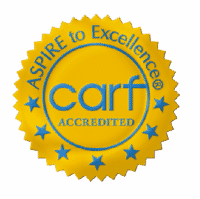
By Trafalgar’s Editorial Team
This Content is Created By Kinga Burjan, M.A., R.P.
Stress Management: Distress Tolerance
Today, I’ll be exploring distress tolerance, a specific stress management technique.
So increasing our distress tolerance helps us cope and survive during the crisis and allows us to become more tolerant of short-term or long-term pain. And this includes both physical and emotional pain.
Tolerating distress includes mindfulness of your breath and mindful awareness of situations and ourselves. So the more we are aware of ourselves, the more we practice mindfulness, the easier it is to ride the wave and distressful emotions.
When we feel upset or distressed, we may react automatically without thinking about the consequences, and we can often get into a habit of using unhelpful and sometimes self-destructive behaviors to help us cope. These behaviors might include undereating or overeating, using or relying on drugs and alcohol, self-harming or even exercising to an excessive point. When we use these self-destructive coping behaviors, we often get caught up in a vicious cycle of thinking we’re bad for doing them, which makes us feel even worse and makes us more likely to keep on doing them because we don’t know what else to do. So it becomes a vicious cycle.
To break the cycle, we can learn to do things differently, including learning new healthy coping skills, which over time will help us feel better about ourselves and others and learn to understand and see your thoughts differently. But with anything new, it takes time and practice. It’s not an easy or quick fix. So do your best to keep at it. Choose one of the skills today and practice, practice, practice.
Improve The Moment
One of the skills we’re going to review our techniques is called improve the moment. So this is from Dialectical Behavioral Therapy, or DBT. And it uses an acronym improve to remind us of how we can help ourselves during distress and times.
So what does “improve” stand for?
I stands for imagery. This means imagining yourself in a safe place. M stands for finding meaning in the situation. P stands for prayer or if prayer doesn’t resonate with you, perhaps meditation or positive affirmations. R stands for relaxation, so being aware of your body, relaxing your breath, relaxing your body. O, taking one thing at a time. V, vacation takes some time out of the situation, perhaps remove yourself out of the situation, give yourself new time, or actually imagine yourself on a beautiful holiday and E, encouragement, positive and calming self-talk. So this is one acronym you can use that has a variety of different coping techniques within.
Another Acronmy: Accepts
Another acronym through DBT is Accepts. So what does this acronym stands for, activities, so we are going to go over a bunch of activities, something to distract your mind. The first C, contributing, so helping others. The next C is for comparisons and comparing yourself with a better self. So how do you want to be in this situation? E is for emotions. You can actually generate different emotions by watching a movie, listening to music, something that gets you emotionally. P is for pushing away and actually thinking about or putting your attention onto something else rather than what’s distressing you in the moment. T, thoughts, providing new thoughts. So actually redirecting your thoughts to something like choosing ten colors in the room or thinking of ten fruits. So actively engage in your thoughts on something different that isn’t going to be just regulating. Sensations, so using your touch or hearing your smelling, your tasting to bring your focus onto your sensations rather than to what’s distressing you.
Self-Soothing Activities
So some simple examples of self-soothing activities you can do at home are those.
For example, you might want to mow the lawn, clean the car, do some gardening. You might also want to do some leisure activities, such as aromatherapy, reflexology, watch television, play on the computer, surf the Internet, go outside.
Breathe in the fresh air. These are very simple ideas, but there are so many more ideas that you can think about brainstorm, check on the Internet. The point is you’re actively engaging and changing that feeling or sitting with it in a way where you choose not to become actively involved in that self-destructive behavior.
So mindfulness is being aware of what’s going on and then using some of these strategies or even one of these strategies to help self-soothe or distract yourself long enough for that intense feeling to go away.
Those are a couple of ideas for self-soothing or healthy distraction that you can use and start implementing when your distress comes high.






